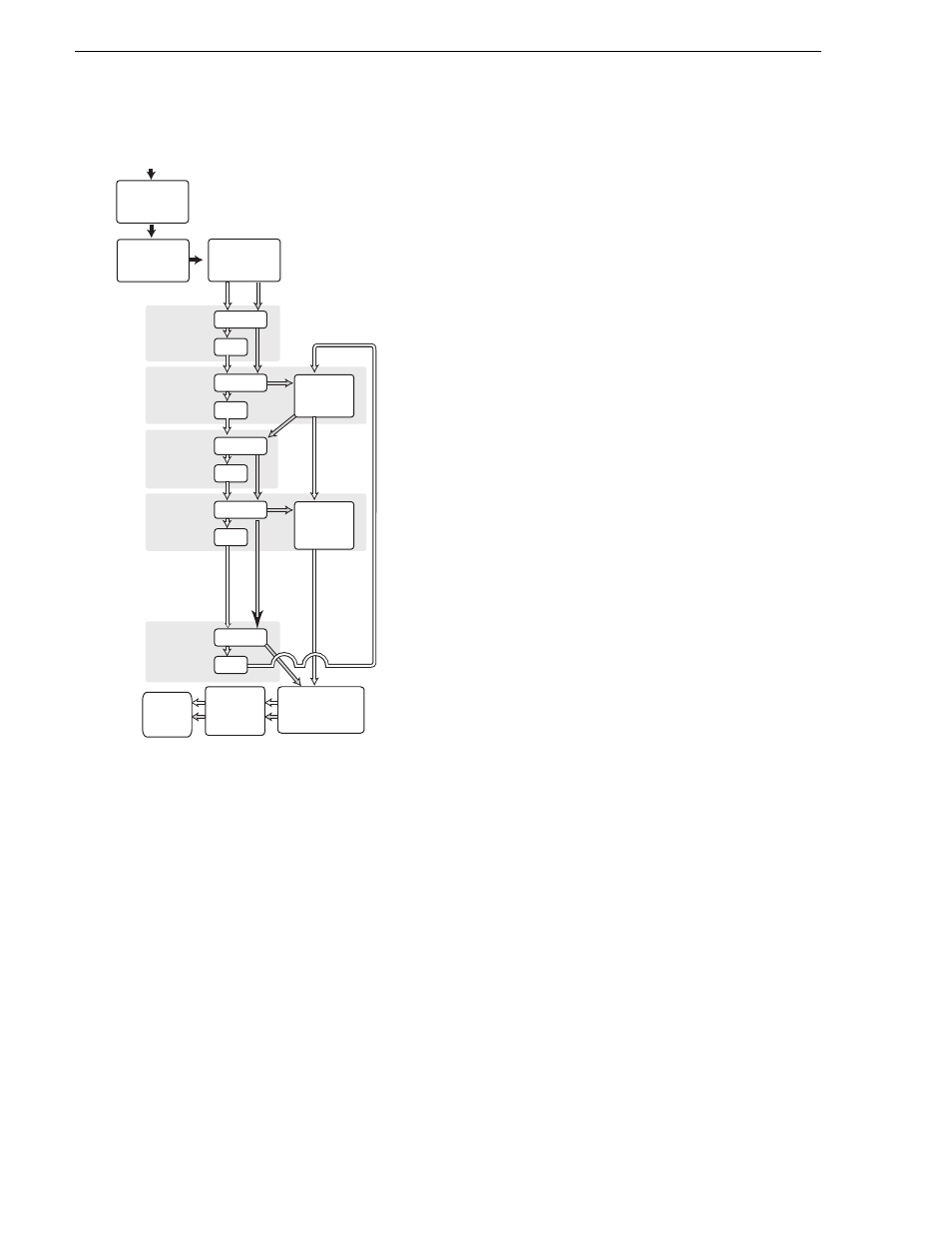Configuration overview - k2 storage, Chapter 5 configuring the system – Grass Valley Aurora Browse v.7.0 Installation User Manual
Page 72

72
Aurora Browse Installation and Configuration Guide
April 6, 2010
Chapter 5 Configuring the system
Configuration overview - K2 storage
This flowchart illustrates the major tasks required
for configuring a system that accesses K2 storage.
Before beginning this task flow make sure that the
K2 storage and iSCSI networks are set up.
Core configuration tasks are broken down into
stages. You can work through the configuration
stages in different ways, as follows:
You can also choose a combination of Basic and
Advanced paths to suit your level of
understanding and the design of the particular
system you are configuring.
This task flow assumes the use of the standard
Aurora Browse application for testing and
verification. If using Aurora Edit LD, refer to the
Aurora Edit Release Notes, which are found on the
Aurora Suite CD.
If you are new to the system, follow
the
Basic
path.This path allows you
to learn the system and resolve
configuration problems in stages,
with a minimal number of
configuration variables and
machines added to the system at
each stage. Then, after you have
gained the understanding to make
each stage of the system work
properly, configure the remainder of
the system and add all machines.
If you are experienced with the
system and you want the fastest
possible configuration, follow the
Advanced
path and configure the
entire system in one pass, adding all
machines at each stage.
Configure
Test
Configure
Test
MediaFrame
Stage
Configure
Test
Archive
Stage
Aur. Prxy
Enc. +
Stand-alone
Users add
Browse
Clients
to their
End
Basic Path
Advanced Path
Establish
Conventions
Configure
Network
Prepare
NAS, etc.
Configure
Test
Aur. Prxy
Enc. +
Server Stage
Add
remaining
Aur. Prxy Enc.
Configure
Test
SmartBin
Encoder
Stage
Add
remaining
S.B. Enc.
Administrator
assigns
users roles
and licenses
